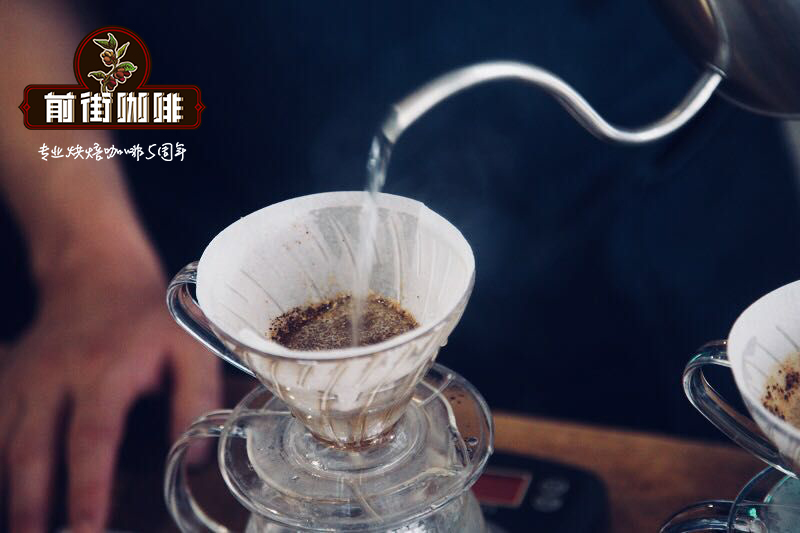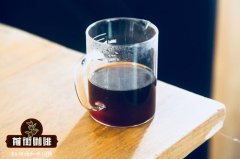Ethiopian Coffee Bean Story Ethiopian Coffee introduction to Ethiopia Yega Xuefei

Professional coffee knowledge exchange More coffee bean information Please pay attention to coffee workshop (Weixin Official Accounts cafe_style)
Ethiopian coffee beans
Ethiopia has long been regarded as the origin of coffee. When you learn how coffee is processed locally, you can probably understand that this imperial status is deserved. Even under the harshest conditions, when coffee trees are blocked from sunlight by other crops, most farmers insist on not using agrochemicals. Only in some coffee industries operated by the government in the southwest of the country, small amounts of agrochemicals may be present in wet-treated coffee. Harar (garden coffee) and Yirgacheffe (garden coffee) are, of course, exceptions because coffee is always produced in small quantities by individual farmers in traditional ways.
Ethiopian coffee region
The wet-processed coffee on the market is basically from Sidamo, H á rr á r, Kaffa regions, and the unique combination of varieties in these regions also gives Ethiopia an irreplaceable flavor. However, most people buy coffee without knowing the difference in variety between products, on the grounds that products are only labeled as native to Ethiopia. In fact, it represents a rare combination of SL28, SL38, Catuai, Geisha and Typica varieties. Ethiopian farmers kept their varieties anonymous in order to prevent them from being lost overseas, just as summer coffee was popularized by Panamanians. Of course, they may not be able to identify the species planted because their production is too extensive.
natural treatment
Properly processed, naturally processed coffee beans have fruity flavours and vinous acidity, intense sweetness and fresh fruit salad flavours. Hami melons, cherries, grapes, limes, green apples and even peaches are all available in natural Ethiopian coffee. The heavier texture is usually honeyed, velvety and soft, but with a little bit of natural color. However, the flavor of coffee beans can be destroyed if not handled properly, and drying is probably the decisive part.
The coffee produced by washing method can combine elegance, mystery and delicacy, while the coffee produced by natural treatment has wild and charming fruit flavor. Subtle floral, herbal and lemon flavors are all characteristics that cannot be touched by outside coffee. Generally speaking, bergamot, jasmine and blueberry will be vividly reflected in the aftertaste.
However, in the past decade, the coffee industry has undergone many changes, and the technical principles applied in wet processing have gradually been extended to natural processing, making the quality of coffee beans more stable under natural processing. There are more and more institutions supporting equal trade, more opportunities for cross-border cooperation, more projects and more progress in technical support. Coupled with the growing importance of specialty coffee in recent years, Ethiopia's position on the international stage seems to continue to flourish.
Water washing purification method and YIRGACHEFE
Yegashefi is a small town in Sidamo province, too small to be seen on the map. Sidamo province is located in southern Ethiopia. The taste is usually delicate and rich. As with coffee from the same region, a typical yeghashefi must have a wild fruit flavor and a strong floral aroma, thanks to the high altitude (5,800- 6,000 feet) conditions combined with water washing.
The floral, fruity and tea-like aftertaste extracted by the washing process is often its attraction. Eth <$ор и а was introduced in 1970 as wet processing and was the site of the first washing tank. The washing process can be understood as fermentation shelling and direct drying. Although the production process and equipment require significant investment, the determination of investors remains unhindered because of the traditional alcohol and lemon aromas produced. Due to sufficient investment, the design of the washing tank has been continuously improved and unified. Under the professional technology, the stable quality of Yejia Xuefei gradually entered the international market in the name of specialty coffee and was favored by many coffee lovers.
No matter how it is prepared, as long as it is freshly baked and ground, anyone can definitely taste the unique aroma and taste of Yerga Shefi. Floral and citric acid can be fully brewed in cold bubble, if you choose to brew in hot water, you must also avoid excessive brewing and make delicate fruit loss.
French press or CHEMEX coffee pot with metal filter are suitable, but can let more coffee fat through.
Ethiopian coffee varieties will continue to grow and change due to genetic diversity, creating unique flavors that many people are looking for!
Front street hand flushing suggested parameters: V60/90℃/1:15/time two minutes
Important Notice :
前街咖啡 FrontStreet Coffee has moved to new addredd:
FrontStreet Coffee Address: 315,Donghua East Road,GuangZhou
Tel:020 38364473
- Prev

Costa Rican coffee origin Sonora Manor Huang Kaduai is suitable for hand-brewed coffee beans
Professional coffee knowledge exchange more coffee bean information please follow the coffee workshop (Wechat official account cafe_style) Sonora Manor in the Central Valley of Costa Rica Huang Kaduai seed tanning treatment Product name: Costa Rica Sonora Alberto Guardia Yellow Catuai Natural Origin: Central Valley Manor: Sonora Variety: Yellow Catuai
- Next

Costa Rican Coffee Origin Sonora Manor Venice varieties suitable for hand-brewing coffee beans
Professional coffee knowledge exchange more coffee bean information please follow the coffee workshop (Wechat official account cafe_style) Costa Rica Hacienda Sonora Venecia Honey Costa Rica Sonora Manor Venice variety honey treatment flavor: orange, plum, lime, lemon peel, mulberry, honey, rich and smooth taste, Qianjie coffee recommends hand-made coffee Sono
Related
- Detailed explanation of Jadeite planting Land in Panamanian Jadeite Manor introduction to the grading system of Jadeite competitive bidding, Red bid, Green bid and Rose Summer
- Story of Coffee planting in Brenka region of Costa Rica Stonehenge Manor anaerobic heavy honey treatment of flavor mouth
- What's on the barrel of Blue Mountain Coffee beans?
- Can American coffee also pull flowers? How to use hot American style to pull out a good-looking pattern?
- Can you make a cold extract with coffee beans? What is the right proportion for cold-extracted coffee formula?
- Indonesian PWN Gold Mandrine Coffee Origin Features Flavor How to Chong? Mandolin coffee is American.
- A brief introduction to the flavor characteristics of Brazilian yellow bourbon coffee beans
- What is the effect of different water quality on the flavor of cold-extracted coffee? What kind of water is best for brewing coffee?
- Why do you think of Rose Summer whenever you mention Panamanian coffee?
- Introduction to the characteristics of authentic blue mountain coffee bean producing areas? What is the CIB Coffee Authority in Jamaica?

